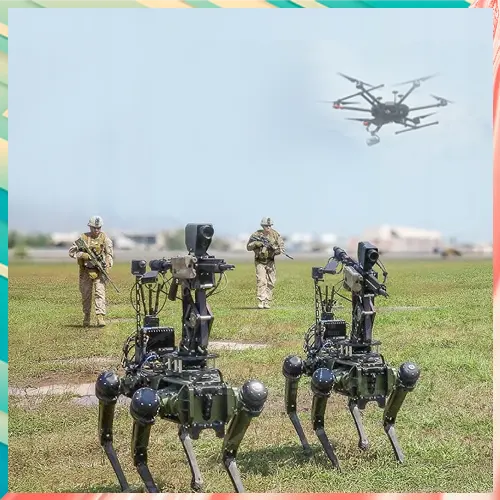
As Beijing deepens its reliance on DeepSeek and indigenous hardware, experts warn the militarization of AI is entering a more sophisticated — and potentially destabilizing — era of technological competition
China is rapidly advancing its military artificial intelligence (AI) initiatives, increasingly deploying homegrown models such as DeepSeek to enhance decision-making, surveillance, and autonomous operations. The move marks a significant escalation in the global AI arms race as Beijing seeks to reduce dependence on Western technologies and strengthen its defense innovation ecosystem.
DeepSeek leads China’s AI-driven defense push
Among China’s most notable advancements is Norinco’s P60, an autonomous combat-support vehicle capable of operating independently at speeds up to 50 km/h. Powered by DeepSeek’s AI technology, the vehicle has been described by Chinese officials as a milestone in efforts to narrow the technological gap with the United States.
According to government procurement data, more than a dozen military tenders issued in 2025 referenced DeepSeek — far surpassing mentions of rival domestic models such as Alibaba’s Qwen. Analysts believe this shift underlines the People’s Liberation Army’s (PLA) focus on achieving “algorithmic sovereignty”, a strategy aimed at developing self-reliant digital infrastructure while reducing exposure to Western sanctions or export controls.
From Drones to chips: Expanding AI applications
Research partnerships between the PLA and top Chinese universities are further accelerating AI adoption. Beihang University has filed patents using DeepSeek to coordinate drone swarms and improve target-tracking accuracy, while teams at Xi’an Technological University claim their DeepSeek-based system can evaluate 10,000 battlefield scenarios in under a minute—reducing planning cycles from 48 hours to 48 seconds.
Despite U.S. export restrictions on advanced Nvidia chips, references to Nvidia’s A100 processors persist in Chinese defense patents. However, recent procurement documents reveal a transition toward Huawei’s Ascend chips, aligning with Beijing’s broader campaign to strengthen domestic semiconductor capabilities.
Beyond drones and vehicles, PLA tenders also mention AI-powered robot dogs for reconnaissance and hazardous missions, as well as immersive digital command centers designed for real-time strategic simulations.
A new phase in the AI arms race
China’s pursuit of semi-autonomous and autonomous weapon systems mirrors similar U.S. initiatives to deploy AI-enabled defense technologies by 2025. While both countries maintain commitments to human oversight in lethal operations, defense analysts caution that the line between control and autonomy is becoming increasingly blurred.
As Beijing deepens its reliance on DeepSeek and indigenous hardware, experts warn the militarization of AI is entering a more sophisticated — and potentially destabilizing — era of technological competition.
See What’s Next in Tech With the Fast Forward Newsletter
Tweets From @varindiamag
Nothing to see here - yet
When they Tweet, their Tweets will show up here.





























